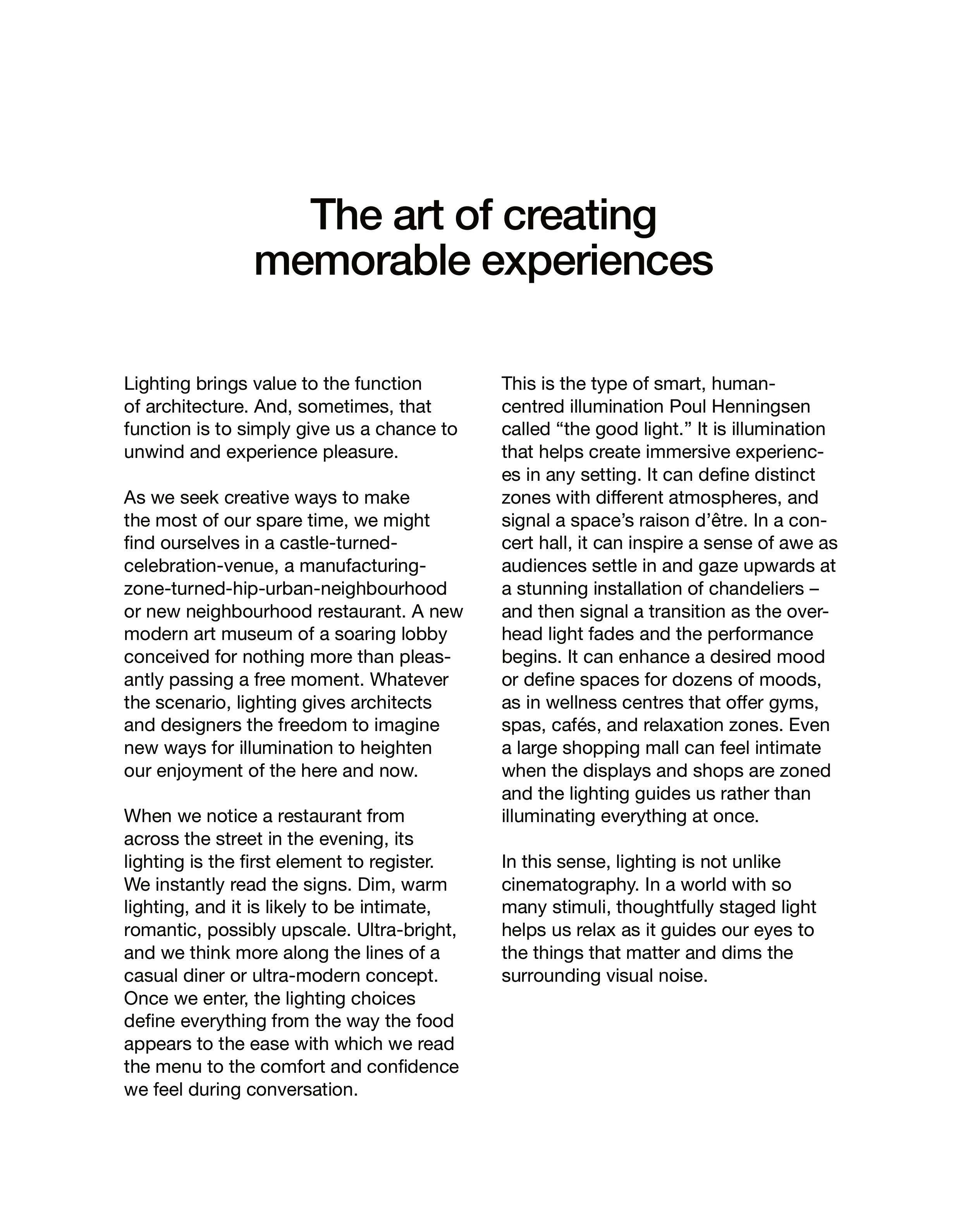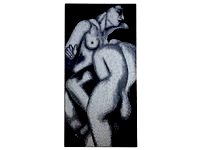The art of creating
memorable experiences
Lighting brings value to the function
of architecture. And, sometimes, that
function is to simply give us a chance to
unwind and experience pleasure.
As we seek creative ways to make
the most of our spare time, we might
find ourselves in a castle-turned-
celebration-venue, a manufacturing-
zone-turned-hip-urban-neighbourhood
or new neighbourhood restaurant. A new
modern art museum of a soaring lobby
conceived for nothing more than pleas-
antly passing a free moment. Whatever
the scenario, lighting gives architects
and designers the freedom to imagine
new ways for illumination to heighten
our enjoyment of the here and now.
When we notice a restaurant from
across the street in the evening, its
lighting is the first element to register.
We instantly read the signs. Dim, warm
lighting, and it is likely to be intimate,
romantic, possibly upscale. Ultra-bright,
and we think more along the lines of a
casual diner or ultra-modern concept.
Once we enter, the lighting choices
define everything from the way the food
appears to the ease with which we read
the menu to the comfort and confidence
we feel during conversation.
This is the type of smart, human-
centred illumination Poul Henningsen
called “the good light.” It is illumination
that helps create immersive experienc-
es in any setting. It can define distinct
zones with different atmospheres, and
signal a space’s raison d’être. In a con-
cert hall, it can inspire a sense of awe as
audiences settle in and gaze upwards at
a stunning installation of chandeliers –
and then signal a transition as the over-
head light fades and the performance
begins. It can enhance a desired mood
or define spaces for dozens of moods,
as in wellness centres that offer gyms,
spas, cafés, and relaxation zones. Even
a large shopping mall can feel intimate
when the displays and shops are zoned
and the lighting guides us rather than
illuminating everything at once.
In this sense, lighting is not unlike
cinematography. In a world with so
many stimuli, thoughtfully staged light
helps us relax as it guides our eyes to
the things that matter and dims the
surrounding visual noise.




